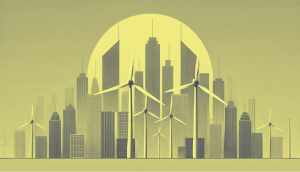Hydrogen Fuel Cells
Chemical engineer Dionisios Vlachos on the Apollo space missions, overpotentials, and proton exchange membrane...

Some countries will ultimately transition to renewable energy sources by 2050. Many are already moving away from hydrocarbons, while others are in no rush to change their energy landscape.
First, let’s agree on terminology. Instead of “alternative energy,” it is better to say “renewable energy,” as we have no alternative. Thus, there is renewable energy and non-renewable (traditional) energy.
Non-renewable energy sources include coal, natural gas, oil, and nuclear energy, which account for over 80% of global final energy consumption. Renewable energy includes hydropower, bioenergy, solar, and wind energy. Other less utilized types of renewable energy include geothermal, wave, and tidal energy. Their share on a global scale is small.
Hydropower is often singled out because the construction and operation of hydroelectric power stations (HPPs) cause significant environmental damage. Generally, HPPs are divided into large and small; the classification varies by country. Small HPPs are relatively harmless to the environment. The situation with large HPPs is much more complex and harmful. Firstly, their construction requires significant landscape alterations. Often, towns and villages are flooded, leading to environmental pollution — secondly, the ecosystem in the flooded areas changes. Thirdly, the reservoirs of HPPs emit methane—a gas with a greenhouse effect 25 times greater than that of carbon dioxide. Fourthly, large HPPs hinder fish movement and reproduction.
Furthermore, the economic construction and operation timelines of large HPPs differ significantly from those of other renewable energy power stations.
Traditional biomass is a separate group of renewable energy sources—firewood and brushwood. Their use often negatively impacts public health and the environment. In many developing countries, people still use “black stoves,” essentially making a “bonfire” indoors to cook, increasing cancer rates. Thus, both firewood and brushwood are renewable but outdated energy sources, traditional biomass.
Today, solar and wind energy account for 7.9% of global electricity. The first wind power plant was built at the end of the 19th century. However, wind energy began to be more actively used closer to the mid-20th century in decentralized energy supply zones. The use of solar cells for electricity generation started only in the 1950s. Initially, solar panels could have been more efficient and expensive, used only in the space industry.
A new development wave hit renewable energy after the 1973 oil crisis when oil prices sharply increased due to the Arab oil embargo against Israel’s allies. European countries and the USA began investing heavily in renewable energy development—both in research and development and in stimulating demand. Since the 2000s, when the efficiency of renewable energy technologies significantly improved and their cost decreased, developing countries began to join the process actively. This was also facilitated by the worsening environmental crisis in the developing world due to rapid industrial development.
Today, China is the leader in installed capacities and investments in renewable energy due to the very alarming environmental situation in the country. Coal is China’s primary electricity source, causing smog that makes breathing impossible in significant cities. Over the past decade, the Chinese government has been trying to change this situation by focusing on renewable energy sources. Their share in electricity production in China, excluding hydropower, is about 10%. India follows China.
The cost of producing a kilowatt-hour (kWh) of electricity depends on many factors: capital and operational expenses, cost of capital, fuel cost, and the capacity utilization factor (CUF). The cost of renewable energy production varies by country.
If solar power plants are installed on private house roofs, they operate on average 13–19% of the time globally. On solar farms, they operate 21–32% of the time due to the ability to choose the optimal location and angle for panels. In the private sector, roof design often limits panel placement, with potential shading from nearby buildings or trees. On solar farms, there are economies of scale: the more units produced, the cheaper each unit becomes.
The global popularity of renewable energy will only grow. In 2019, the share of renewable energy in Germany’s electricity production was 46%. By 2050, some European countries and US states (including California, with a population of about 40 million) will completely switch to renewable energy. Other countries and regions will follow.
Humanity will continue to use hydrocarbons for a long time, but the share of renewable energy will steadily increase. Predicting the end of the oil and gas era is difficult: new deposits may be discovered, extraction technologies improved, and hydrocarbon prices may fall (as we are witnessing now). However, these events will only temporarily delay the transition to the renewable energy era.

Chemical engineer Dionisios Vlachos on the Apollo space missions, overpotentials, and proton exchange membrane...

Understanding wind energy and how electricity is generated from wind

Mike Flannigan, Professor of Wildland Fire, on the link between wildfires and global warming, the future of wi...